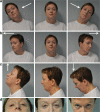Vestibular rehabilitation in elderly patients with central vestibular dysfunction: a prospective, randomized pilot study
- PMID: 23179254
- PMCID: PMC3825000
- DOI: 10.1007/s11357-012-9494-7
Vestibular rehabilitation in elderly patients with central vestibular dysfunction: a prospective, randomized pilot study
Abstract
For the vestibular system, aging is associated with degenerated otoconia and loss of hair cells, vestibular afferents, and cells in the vestibular nuclei. Further neurodegenerative processes involve cortical, extrapyramidal motor, and cerebellar structures. Dizziness is quite common in the elderly, limiting their mobility and activities. The role of vestibular rehabilitation in these patients is controversial. The present prospective, randomized, preliminary investigation aimed to compare the effect of a 6-week posturography-assisted vestibular rehabilitation protocol (30 min a week) combined with a home-based exercise program (group A, 14 randomly assigned elderly patients) with the same home-based exercise program alone (group B, 14 randomly assigned elderly patients) for treating dizziness due to central vestibular dysfunction in elderly patients. The outcomes were analyzed using the 25-item Dizziness Handicap Inventory (DHI) and computerized posturography. After rehabilitation, group A scored significantly better in the DHI for the functional (p = 0.0016) and emotional (p = 0.01) domains and total score (p = 0.001); only the emotional domain improved significantly in group B (p = 0.038). Group A improved significantly in some posturographic parameters in the motor tests (reaction time, movement velocity, and endpoint excursion), while group B experienced more limited improvements. Our preliminary results with a program of posturography-assisted vestibular rehabilitation, and home-based exercises are more promising than with home-based exercises alone. A new study on a larger series of elderly patients with central vestibular dysfunctions is currently underway at Padova University, considering the effect of a protocol involving rehabilitation with computerized posturography alone and the relationship between outcomes and the duration of rehabilitation programs.
Figures






References
Publication types
MeSH terms
LinkOut - more resources
Full Text Sources
Medical
